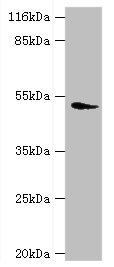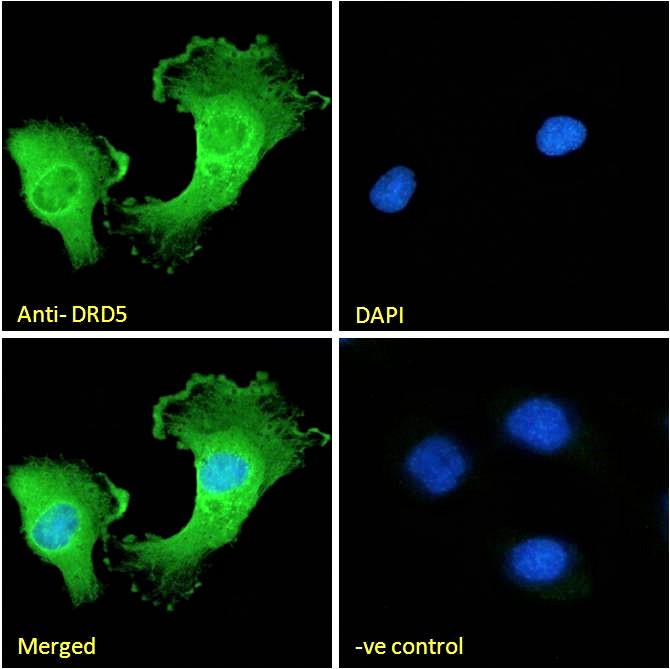Dopamine Receptor D5 antibody
GTX77969
ApplicationsWestern Blot, ImmunoHistoChemistry, ImmunoHistoChemistry Frozen, ImmunoHistoChemistry Paraffin
Product group Antibodies
TargetDRD5
Overview
- SupplierGeneTex
- Product NameDopamine Receptor D5 antibody
- Delivery Days Customer9
- Application Supplier NoteIHC-P: 3.4 microg/ml. IHC-P: 3.4 microg/ml. *Optimal dilutions/concentrations should be determined by the researcher.Not tested in other applications.
- ApplicationsWestern Blot, ImmunoHistoChemistry, ImmunoHistoChemistry Frozen, ImmunoHistoChemistry Paraffin
- CertificationResearch Use Only
- ClonalityPolyclonal
- Concentration1 mg/ml
- ConjugateUnconjugated
- Gene ID1816
- Target nameDRD5
- Target descriptiondopamine receptor D5
- Target synonymsD(1B) dopamine receptor; d(5) dopamine receptor; D1beta dopamine receptor; DBDR; dopamine D5 receptor; dopamine receptor D1B; DRD1B; DRD1L2
- HostRabbit
- IsotypeIgG
- Protein IDP21918
- Protein NameD(1B) dopamine receptor
- Scientific DescriptionThis gene encodes the D5 subtype of the dopamine receptor. The D5 subtype is a G-protein coupled receptor which stimulates adenylyl cyclase. This receptor is expressed in neurons in the limbic regions of the brain. It has a 10-fold higher affinity for dopamine than the D1 subtype. Pseudogenes related to this gene reside on chromosomes 1 and 2. [provided by RefSeq, Jul 2008]
- Storage Instruction-20°C or -80°C,2°C to 8°C
- UNSPSC12352203
References
- Urinary Dopamine as a Potential Index of the Transport Activity of Multidrug and Toxin Extrusion in the Kidney. Kajiwara M et al., 2016 Jul 30, Int J Mol SciRead more
- D1-like dopamine receptors downregulate Na+-K+-ATPase activity and increase cAMP production in the posterior gills of the blue crab Callinectes sapidus. Arnaldo FB et al., 2014 Sep 15, Am J Physiol Regul Integr Comp PhysiolRead more





